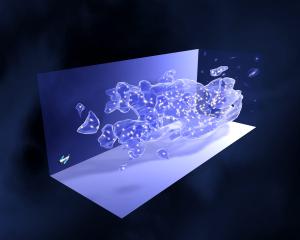Post
Five Facts
15 August 2013
 NASA, ESA and R. Massey (California Institute of Technology)
NASA, ESA and R. Massey (California Institute of Technology)Within astrophysics there are a few topics that are controversial. They aren’t controversial within the scientific community, but every time they are mentioned a few readers will note that the theories are nonsense. The big three are dark matter, dark energy, and the big bang.
Part of this controversy is driven by the way these topics are often presented. Popular science tends to focus on their wild and mysterious aspects, presenting them as great mysteries that defy efforts to understand them. Then there are the misconceptions that are repeated about these topics (such as the idea that universe began with an explosion). Finally there are new alternative models touted in the press as overturning our accepted models, when most of these either don’t agree with observation or are not rigorous enough to be tested experimentally.
In the past I have done a week-long series on certain topics. I don’t do them all the time because they take more work than one-off posts, but they tend to be rather popular. So far the series have been fairly broad in scope, covering the quantum revolution, or science fiction vs. science fact. But this time I’m trying something a bit different: cover one topic in detail. Background, proposed models, observational evidence, and why we support one theory over the alternatives.
We’ll start with dark matter. It was first proposed in the mid 1900s, and since then its existence has become both more confirmed and more bizarre. For this series we’ll look at five facts:
Standard gravitational theory applied to the matter we see does not match what we observe. Since the 1920s we’ve seen that things don’t add up. Either there is much more mass in the universe than we can see, or our understanding of gravity is very, very wrong. After almost a century of astronomical observations, that fact has remain unchanged.
Alternative gravitational models don’t solve the problem. The obvious choice is that gravity acts differently on cosmic scales. Einstein improved on Newton, so why not simply improve on Einstein. Many alternatives have been proposed, but later observations have disproved them.
Dark matter (mass that doesn’t interact strongly with light) does work. The model of dark, weakly interacting matter does agree with observation. This model has passed every test thus far. Everything we’ve observed points in the direction of dark matter.
Known dark matter isn’t enough. We know of some things that have mass and weakly interact with light, such as neutrinos. They are a part of the dark matter, but not all of it. There must be an additional type of dark matter, and we aren’t yet sure what it is.
We actually know quite a bit about dark matter. There are fundamental aspects of dark matter we don’t yet understand. But there is also a great deal we do know, such as how much there is in the universe, as well as its distribution among the galaxies. Dark matter is not simply a name we use to hide our ignorance.
So if you’ve ever wanted to know about dark matter, stay tuned. We’ll get into the real details starting tomorrow. And that’s a fact.